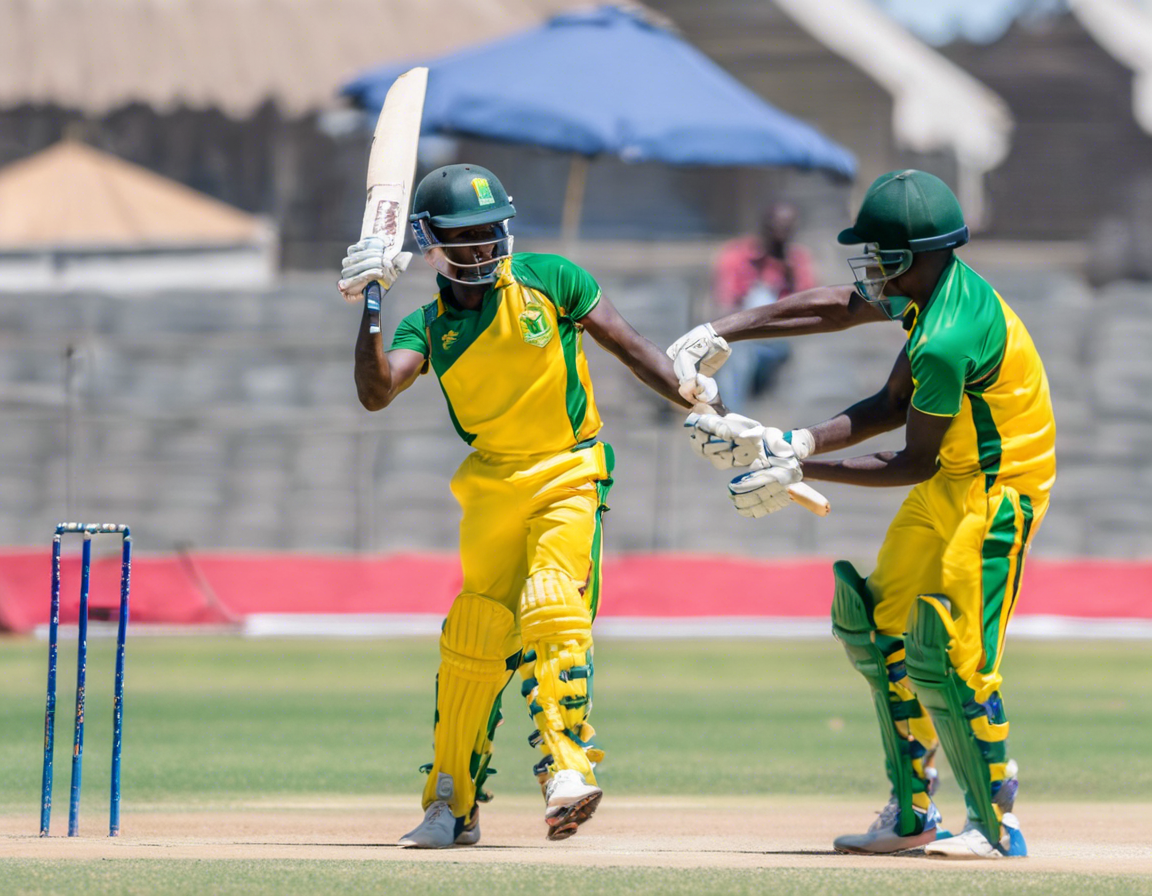Cricket enthusiasts often find it challenging to interpret and understand the intricacies of a cricket scorecard, especially for matches involving lesser-known teams such as Zimbabwe and Namibia. However, decoding a cricket scorecard can be an enriching experience, providing a wealth of information about the match and the performance of individual players. In this guide, we will dissect a typical cricket scorecard for a match between Zimbabwe and Namibia, shedding light on various components and key statistics to help fans gain a deeper understanding of the game.
Understanding the Basics of a Cricket Scorecard:
Before delving into the specifics of a Zimbabwe vs. Namibia cricket scorecard, let’s cover some fundamental aspects that you are likely to encounter:
1. Team Information:
-
Zimbabwe: The information about the Zimbabwean team will typically include the playing XI, with the order in which the batsmen batted, followed by the bowlers and fielders.
-
Namibia: Similar to Zimbabwe, the Namibian team details will outline their playing XI, including the batting and bowling order.
2. Batting Statistics:
-
Runs: The number of runs scored by each batsman will be displayed next to their name.
-
Balls: This indicates the number of balls faced by the batsman.
-
4s and 6s: The number of boundaries (4s) and sixes (6s) hit by each batsman.
3. Bowling Statistics:
-
Overs: The number of overs bowled by each bowler.
-
Maidens: The number of maidens bowled (overs in which no runs were scored).
-
Runs: The runs conceded by the bowler.
-
Wickets: The number of wickets taken by the bowler.
4. Fielding Statistics:
-
Catches: The number of catches taken by fielders.
-
Run-outs: Instances of run-outs effected by fielders.
Analyzing a Zimbabwe vs. Namibia Cricket Scorecard:
Now, let’s break down a sample scorecard from a Zimbabwe vs. Namibia match to provide a comprehensive understanding:
Zimbabwe Innings:
- Player A: 52 runs (45 balls, 8 fours)
-
Player A showcased a solid performance, scoring 52 runs off 45 balls with 8 boundaries, providing a steady start for Zimbabwe.
-
Player B: 36 runs (30 balls, 4 fours)
-
Player B supported the innings with a brisk 36 off 30 balls, including 4 boundaries to maintain the momentum.
-
Player C: 20 runs (18 balls, 2 fours)
- Player C contributed a valuable 20 runs off 18 balls, adding crucial runs to the total.
Namibia Bowling Figures:
- Bowler X: 4 overs, 1 maiden, 20 runs, 2 wickets
-
Bowler X was the pick of the Namibian bowlers, conceding only 20 runs in 4 overs while claiming 2 key wickets.
-
Bowler Y: 3 overs, 0 maidens, 30 runs, 1 wicket
- Bowler Y had a decent spell, picking up 1 wicket but conceding 30 runs in 3 overs.
Key Metrics to Assess Performance:
-
Run Rate: Calculated by dividing the total runs by the number of overs faced, the run rate indicates the scoring rate of a team.
-
Strike Rate: The strike rate measures a batsman’s efficiency, computed by dividing the number of runs scored by the balls faced and multiplying by 100.
-
Economy Rate: Bowling economy rate is determined by dividing the runs conceded by the overs bowled.
Frequently Asked Questions (FAQs):
- **What is a Duckworth-Lewis method in cricket, and how does it impact the scorecard?
-
The Duckworth-Lewis method is a complex mathematical formula used to adjust target scores in weather-affected matches.
-
**How are extras like wides and no-balls reflected in a cricket scorecard?
-
Extras are categorized separately and listed along with the runs scored off wides, no-balls, and byes.
-
**What does DNB stand for in a scorecard?
-
DNB stands for “Did Not Bat,” indicating that a player did not get a chance to bat in the innings.
-
**Why do some matches end in a tie or a draw, and how is this depicted in the scorecard?
-
Matches can end in a tie (same total runs) or a draw (time limit exceeded), with specific symbols denoting these outcomes on the scorecard.
-
**How is the ‘Man of the Match’ determined, and where is this information typically found in the scorecard?
- The ‘Man of the Match’ is chosen based on exceptional performance and is usually mentioned at the end of the scorecard.
In conclusion, mastering the art of deciphering a cricket scorecard is essential for avid fans looking to deepen their understanding of the game. By decoding batting, bowling, and fielding statistics, enthusiasts can glean insight into player performances and the overall dynamics of a match, whether it’s a thrilling encounter between Zimbabwe and Namibia or any other cricketing showdown.

